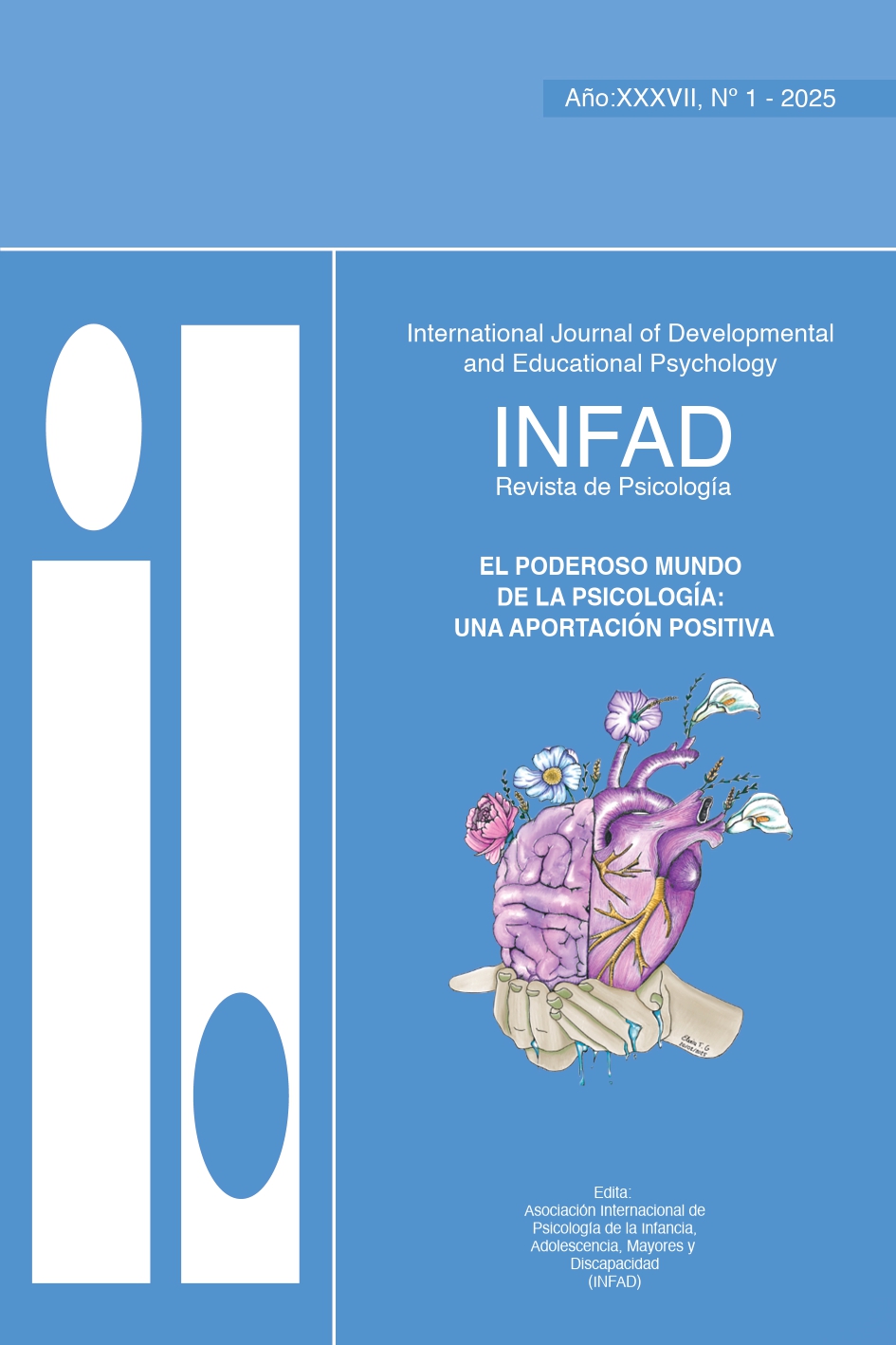Internet use and teacher mediation: a case study in an educational centermediación docente
Main Article Content
Abstract
The widespread avail-ability of internet access is a reality in today’s classrooms. Given the increasing use of the internet by minors, the main online activities they engage in and the mediation strategies employed by teachers to promote responsible and safe use have become relevant topics of research. This descriptive study explores the primary online activities carried out by students and the mediation strategies implemented by teachers to prevent and manage potential online risks, as perceived by the students themselves. To this end, a questionnaire was administered to 159 students from a semi-private school in Alicante, of whom 54.1% were girls and 45.4% boys, enrolled in primary (43.4%) and secondary education (56.6%). The results reveal that boys play video games more frequently than girls. Conversely, girls report that internet-related risks are discussed with them more frequently than with boys. Moreover, secondary school students are more likely to use the internet for social purposes, such as talking to friends, visiting other users’ profiles, and posting content about themselves, although other activities such as watching videos or movies also increase substantially at this educational stage. The teacher mediation strategies that increase significantly at the secondary level include discussing online activities, addressing other online risks, and setting rules within the school context. Previous research indicates that parental mediation strategies regarding internet use tend to decline as students grow older, thereby highlighting the growing importance of digital competence education and risk prevention within the school environment.
Article Details
Section

This work is licensed under a Creative Commons Attribution-NonCommercial-NoDerivatives 4.0 International License.
Attribution — You must give appropriate credit, provide a link to the license, and indicate if changes were made. You may do so in any reasonable manner, but not in any way that suggests the licensor endorses you or your use.
NonCommercial — You may not use the material for commercial purposes.
NoDerivatives — If you remix, transform, or build upon the material, you may not distribute the modified material.

This work is licensed under a Creative Commons Attribution-NonCommercial-NoDerivatives 4.0 International License
How to Cite
References
Andrade, B., Guadix, I., Rial, A. y Suárez, F. (2021). Impacto de la tecnología en la adolescencia. Relaciones, riesgos y oportunidades . UNICEF España
ONTSI. (2023). Brecha de género en el ámbito digital 2024 . Red.es. https://www.ontsi.es/sites/ontsi/files/2024-03/Brecha%20de%20g%C3%A9nero%202024_v05_a_0.pdf
Casado, M. A., Garitaonandia, C., Jiménez, E., Garmendia, M., Karrera, I. y Moreno, G. (2018, febrero). Los niños y las niñas de la brecha digital en España . UNICEF. https://www.unicef.es/sites/unicef.es/files/comunicacion/ESTUDIO_Infancia_y_TICs_web.pdf
Chiner, E., Gómez-Puerta, M., Mengual-Andrés, S. y Merma-Molina, G. (2025). Teacher and school mediation for online risk prevention and management: Fostering sustainable education in the digital age. Sustainability, 17 (8), Artículo 3711. https://doi.org/10.3390/su17083711
Clark, L. S. (2011). Parental mediation theory of the digital age. Communication Theory, 21 , 323–343. https://doi.org/10.1111/j.1468-2885.2011.01391.x
Eastin, M., Greenberg, B. S. y Hofschire, L. (2006). Parenting the Internet. Journal of Communication, 56 , 486–504. https://doi.org/10.1111/j.1460-2466.2006.00297.x
ESPAD Group. (2020). Informe ESPAD 2019: Resultados del proyecto europeo de encuestas escolares sobre alcohol y otras drogas. Observatorio Europeo de las Drogas y las Toxicomanías. https://www.euda.europa.eu/publications/joint-publications/espad-report-2019_en
Garmendia, M., Jiménez, E., Karrera, I., Larrañaga, N., Casado, M. Á., Martínez, G., y Garitaonandia, C. (2019). Actividades, mediación, oportunidades y riesgos online de los menores en la era de la convergencia mediática. Resultados de la encuesta EU Kids Online a menores de 9 a 17 en España, junio 2019 (Informe 1).
Instituto Nacional de Ciberseguridad (INCIBE). https://www.is4k.es/sites/default/files/contenidos/informe-eukidsonline-2018.pdf
Garmendia, M., Karrera, I., Larrañaga, N. y Garitaonandia, C. (2021). The role of school mediation in the development of digital skills among Spanish minors. Profesional de la Información, 30 (6), e300615. https://doi.org/10.3145/epi.2021.nov.15
Garmendia, M., Martínez, G., Karrera, I., Larrañaga, N., Jiménez, E., Olveira, R., Basasoro, M. y Garitaonandia, C.(2021). Experiencias de los docentes de Educación Primaria en la alfabetización digital del alumnado . SIC-Spain 2.0, Unión Europea y Universidad del País Vasco (UPV/EHU).
Gobierno de España (2021). Indicadores de género de la sociedad digital. Ministerio de Asuntos Económicos y Transformación Digital. https://www.ontsi.es/sites/ontsi/files/2021-04/indicadoresgeneromarzo2021.pdf
Instituto Nacional de Estadística [INE]. (2024). Ciencia y tecnología, sociedad de la información . INE. https://www.ine.es/ss/Satellite?L=es_ES&c=INESeccion_C&cid=1259925528782&p=1254735110672&pagename=ProductosYServicios%2FPYSLayout
Livingstone, S. (2013). Online risk, harm and vulnerability: reflections on the evidence based for child internet safety policy. ZER: Journal of Communication Studies, 18 (35), 13-28. http://eprints.lse.ac.uk/62278/
Livingstone, S., Kardefelt-Winther, D. y Saeed, M. (2019). Global Kids Online: Informe comparativo. UNICEF
Oficina de Investigación – Innocenti. https://www.unicef-irc.org/publications/pdf/GKO%20Summary%20report%20web%20version.pdf
Livingstone, S. y Helsper, E. (2009). Balancing opportunities and risks in teenagers’ use of the internet: Of online risk and internet self-efficacy. New Media & Society, 12 (2), 309–329. https://doi.org/10.1177/1461444809342697
Livingstone, S., Haddon, L., Görzig, A. y Ólafsson, K. (2011). Risks and safety on the internet: The perspective of European children. Full findings and policy implications from the EU Kids Online survey of 9–16-year-olds and their parents in 25 countries (Deliverable D4). EU Kids Online Network. http://eprints.lse.ac.uk/33731/
Observatorio Nacional de Tecnología y Sociedad. (2024). Las tecnologías digitales en la infancia y la adolescencia en España. ONTSI. Recuperado de https://www.ontsi.es/sites/ontsi/files/2024-03/Tecnolog%C3%ADas_menores_espa%C3%B1a_v03_a.pdf
Smahel, D., Machackova, H., Mascheroni, G., Dedkova, L., Staksrud, E., Ólafsson, K., Livingstone, S. y Hasebrink, U. (2020). EU Kids Online 2020. Survey results from 19 countries. EU Kids Online . https://www.eukidsonline.ch/files/Eu-kids-online-2020-international-report.pdf
Shin, W., y Lwin, M. O. (2017). How does “talking about the Internet with others” affect teenagers’ experience of online risks? The role of active mediation by parents, peers, and school teachers. New Media y Society, 19 (7), 1109-1126. https://doi.org/10.1177/1461444815626612
Talves, K. y Kalmus, V. (2015). Gendered mediation of children’s internet use: A keyhole for looking into changing socialization practices. Cyberpsychology, 9 (1), article 4. https://doi.org/10.5817/CP2015-1-4

